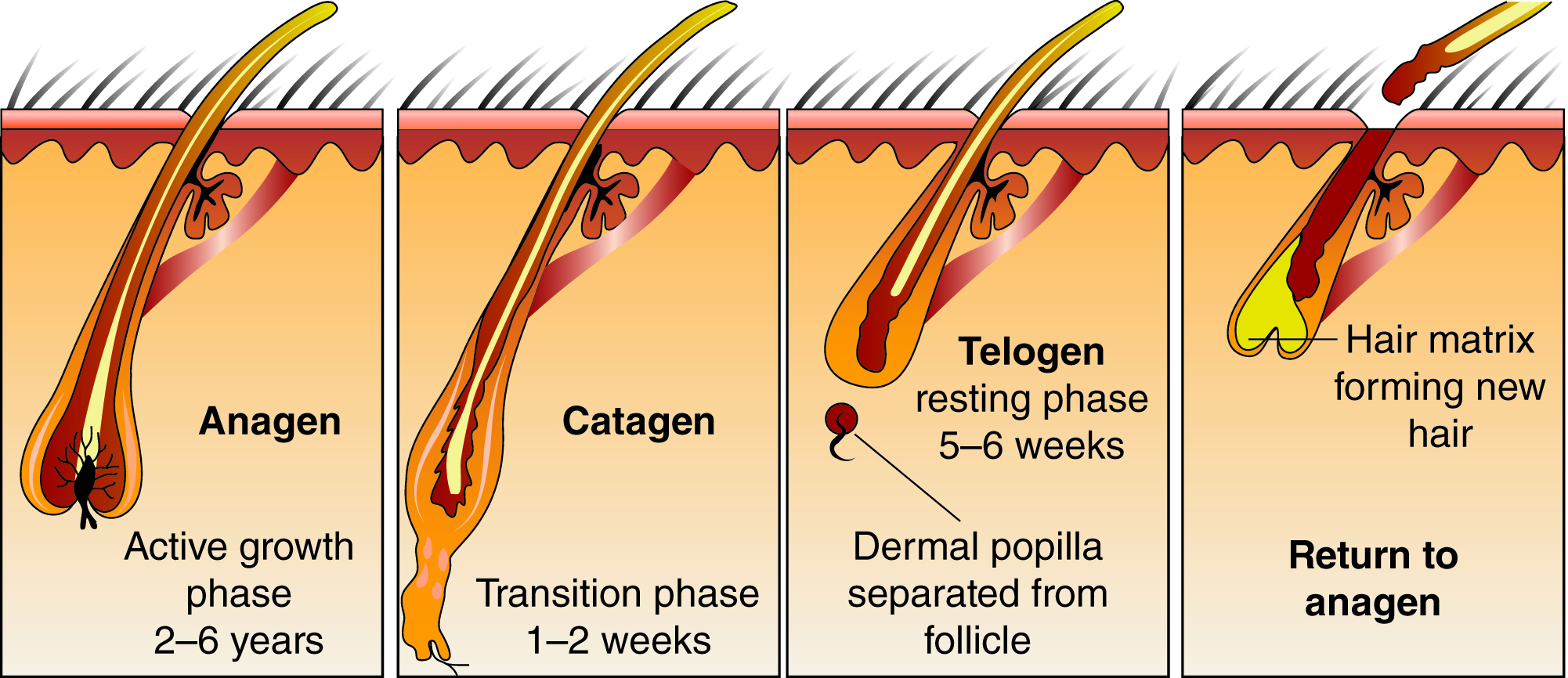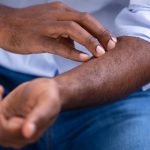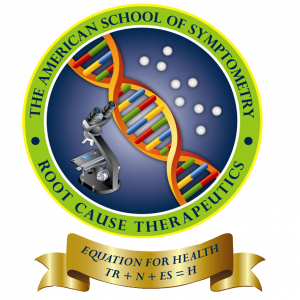
Dr. Maxwell Nartey
Professor of Symptometric Science, American School of Symptometry, NFP
World Center for Health Education & Scientific Enlightenment
Our hair
Our hair and our nails are discussed on pages 143, 171, 173, 465, and 466 of Hole’s Human Anatomy & Physiology, seventh edition, but the discussion is so dry and so theoretical that the average person may not understand what the anatomists are talking about.
Therefore, what I decided to do was, to breathe some life into anatomy and physiology; and to achieve this objective, I decided to trace every hair disorder and nail disorder to the blood impurities that have not been removed, thereby showing how the non-removal of these impeders of circulation are making it impossible for a person’s hair and nails to stay healthy.
If a woman wants to have nice and healthy hair, the hair products that a hair stylist will use on her hair will not reveal the flaws that are in her hair. Instead, the products will mask the flaws that she cannot reverse.
Also, if a woman wants to have her nails done, the products that a manicurist or pedicurist will use to beautify her nails will not reverse the flaws that are in her nailbeds.
Even though I want women to be gorgeous, charming and pretty with beautiful hair, and healthy nails, I also want them to know the sources of their hair disorders and nail disorders so that they will have a choice about what they would like to do. Let me begin with eyelashes.
The eye lashes, and the eyebrows are hair that grow in certain areas of the skin around our eyes. If the skin above our eyes absorbs too many blood impurities, the eyelashes or the eyebrows will fall off, and they may not grow back. Sometimes, the eye lashes will grow inwards.
A child who is born without eyelashes (congenital madarosis) and without eyebrows (congenital madarosis) had a mother who had so many blood impurities in her blood that the skin around her baby’s eyes had to absorb and retain a lot of these impurities. As a result, the blood impurities prevented the baby’s eyebrows and eyelashes from growing.
Baldness, receded hair line, alopecia, brittle hair, hair that the comb pulls out in large amounts with their roots; dry hair, oily hair, itchy scalp, and dandruff, result from the scalp absorbing too many blood impurities.
Are we not supposed to shed some hair every day? Yes, we are, but we are not supposed to shed too much hair. A person who keeps shedding too much hair has malnourished hair.
The impeders of circulation will block the diffusion of water, oil, nutrients, salts, acids, forces, heat and electricity into the roots of the hair. As a result, their hair shafts will become so impoverished that they will break, and they may not grow back. This is the underlying cause of many of the above-mentioned hair disorders.
If the hair follicles cannot receive oil, they will spill the small amount of oil they have, and this will cause oily hair. If the scalp allows nutrients and resources to selectively diffuse into the root of the hair, the person’s hair will not fall off but it will become extremely dry, thereby causing dry hair and a scalp full of dandruff. Since dandruff is the growth factor of certain airborne fungi, a fungal disease could occur on a scalp that is extremely dry, and carpeted with dandruff.
Will washing our hair once a week and applying an anti-dandruff product solve the dryness and the dandruff problem? Not necessarily. Here is why.
Our hair cells get their resources (water, heat, electricity, and salts) and nutrients from blood, not from hair products and tap water. Since blood impurities will not budge unless they are forcibly removed, washing our hair once a week can only be a band-aid solution to the dry scalp and dry hair problem. Here is why.
Water consists of two atoms of hydrogen and one atom of oxygen. If a person uses products that have the alkyl group, these products will eliminate hydrogen from the water they drink and from the water they use to wash their hair. It is the constant removal of hydrogen from water from the skin that will damage the osmosis mechanism to cause cell dryness, dry scalp, itchy scalp, and extremely dry hair.
If a person’s scalp absorbs fat globules from blood, that person will increase his or her chances of having cysts on their scalp.
I have overheard some Black females attribute their extremely dry hair, dry scalp and itchy scalp to their race. The irrevocable scientific truth is, dry hair has absolutely nothing to do with a person’s race. Also, dry hair is neither genetic nor hereditary. It is the symptom of extremely filthy blood.
People tend to buy and use the wrong shampoos and the wrong soaps. In order to use the correct products for our hair and our scalp, it is important to remember that the pH of our scalp is 6.5, meaning acidic. To maintain this pH, we must use products that enhance skin acidity. A product that is alkaline or is too acidic, will damage scalp hair.
Scalp hair is not a luxury. It is a necessity, and it never outlives its usefulness. It is necessary because it is our natural protective canopy. Scalp hair grows vertically, then, it thickens in order to prevent sunlight from injuring our scalp. UV rays have their upside and their downside.
The scalp is the skin that covers our skull, and the skull is the bone that protects our brain.
It is scalp hair that prevents our body’s heat from escaping through our head. Therefore, by preventing heat from escaping through our heads, scalp hair is serving as a temperature regulator, and heat preserver. Why is the heat in our head important? It is important because our brain needs all the thermal energy it can get to prevent the matrix and the dura mater from disintegrating.
If the dura mater and the matrix begin to disintegrate, susceptibility to head colds will occur. This could be followed by mucus in our eyes, itchy eyes, teary eyes, painful eyes, light sensitivity, a lot of phlegm in our noses, etc. Our head is never supposed to be cold.
Additionally, our scalp hair minimizes the magnetic pull of blood impurities into our eyes, our eyebrows and our eyelashes. Then, it minimizes sun damage on our scalp.
Lysozyme
Our eyes are our windows to the world. They produce lysozyme for a reason, and this reason is, to keep removing dust from our eyes, and to keep destroying all the microbes that are trying to infect our eyes for growth factors. Therefore, lysozyme is to our eyes what mucin is to our mouths.
Lysozyme and mucin are our natural, most superb, and no-nonsense antiseptics, antifungals, antivirals, and antiprotozoals for our eyes and our mouths. They are 100 times more efficient at protecting our eyes and our mouths from all kinds of microbes, and from dust than our white blood cells.
However, for our eyes to keep producing lysozyme, we must cook with the recommended salt.
If we do not cook with the recommended salt, enough lysozyme will not be produced. If enough lysozyme cannot be produced, our eyes will become extremely dry, and they will burn. Eye drops can never replace the lysozyme that our eyes produce naturally. This is because eye drops are not made with HDL (high-density lipoprotein). Therefore, they are not natural lubricants for our eyes.
Also, they are not natural antivirals, antiseptics, antifungals and antiprotozoals. Lysozyme can keep our eyes healthy and well moisturized for 35 years. The man-made saline solution in eye drops can only keep the eyes moisturized for up to eight hours, at most. This really proves that natural is better.
Also, without lysosome, the person will experience a severe burning sensation in their eyes, or they will experience lacrimation (excessive tearing or watering). Eventually, photophobia (light sensitivity) will occur. Eye drops neither prevent nor cure photophobia. This is the difference.
Furthermore, it is lysozyme that prevents the eyes from sticking to the eyeballs. Therefore, if lysozyme cannot be produced, mucilage will produce glue, and this glue will make the eyelids to stick to each other when we are sleeping. Eventually, it will glue the eyelids to the eyeballs. Don’t we know many patients who cannot open their eyes in the intensive care units of hospitals? Yes, we do. They have been producing glue for years.
A person can shave off their scalp hair to mask balding, but they must know what to do to minimize sun damage to their scalp. Also, they must know what to do to minimize the magnetic pull of blood impurities into their brain, eyebrows, eyelashes, and globe of their eye. If they cannot find a way to minimize the frequency of the magnetic pull, they will have serious eye problems or eyelid problems in the not-too-distant future.
What about people who do not shave their scalp hair but also have eye diseases and eyelid diseases? Such individuals are suffering from the consequences of cell neglect, and this cell neglect has been going on for years.
It is easy to say that we will all have health problems no matter what we do, but the truth is, those who are knowledgeable about cell care and blood care, will be healthier for a much longer period than those who live their lives chaotically, and patronize treatments that are not in the best interest of their cells and blood.
Our cells do not care whether we know the rules of health or not. They will punish us with all kinds of diseases for violating the rules of health, and for violating the six natural laws.
If we were not taught anything about human hair, it is not too late to learn. Cosmetology does not explain why we are born with hair, and how to grow or regrow our hair. Everything about human hair starts with good circulation, and the constant removal of the impeders of circulation.
Courses on microcirculation and macro-circulation are taught at the American School of Symptometry, NFP.
Our nails
Every week, new nail cells must replace the old nail cells, according to the natural law of automation, and the natural law of replacement, change, and rejuvenation. To enable our nail cells to comply with these two natural laws, our capillaries transport nutrients and resources to our nailbeds while our lymphatic vessels haul wastes away from our nailbeds.
If the connective tissue in our nailbeds absorbs too many blood impurities, kinase and cyclin that divide our cells, will not be able to pull enough substances to produce new nail cells.
Therefore, what causes nail disorders? It is scanty matrix in our nailbeds that causes nail disorders. Then, it is the impeders of circulation, and the non-production of matrix that cause the following nail disorders:
- Brittle nails
- In growing nails
- Extremely short nails
- White spots in the nails
- White crescent in the fingernails
- Claw-like nails
- Ridged nails
- Extremely thick toenails
- Unhealthy-looking cuticles
- Dark nails. If fibrin in the nailbeds absorbs the oxygen eliminators, the person’s nails will become so deoxygenated that they will look dark. Healthy nails must look pinkish, indicating well oxygenated blood
- Nail loss. If kinase and cyclin can no longer harness into the nailbeds the nutrients and the resources with which the matrix is made, the person’s nail or nails will fall off
Consequently, our nails and our hair are the impartial report cards on our circulation.
If we claim we are optimally healthy and we have an excellent circulation, our nails and our hair will vouch for us; and the absence of nail disorders and hair disorders would be a clear testament to the health of our blood.
However, if there are inconsistencies between what we say we are and the condition of our hair, and our nails, we must admit the obvious, which is, we are not optimally healthy.
No one has clean blood, and no one will ever have clean blood for 3 hours because we eat every day, and we produce garbage every day. However, we can keep reducing the number of the circulation impeders that are in our blood so that our blood can flow faster. Health boils down to speed. The faster our blood flows the better.
Our nails and our hair are not decorative accessories like the hubcaps on our cars or trucks. We have them for a reason, and this reason is, they serve as the barometers of our circulatory and lymphatic health.
Symptometry can be contacted to remove the impeders of circulation so that blood can continue to circulate nutrients and resources fast to the cells that need them. Again, faster is better.
© Copyright 2021, The American School of Symptometry, NFP. No part of this publication may be reproduced or transmitted in any form or by any means, electronic or mechanical, including photocopying, recording, or by any information storage and retrieval system without the written permission of The American School of Symptometry, NFP. Library of Congress copyright number Txu 1-621-370, Washington D.C.


 Previous Post
Previous Post Next Post
Next Post